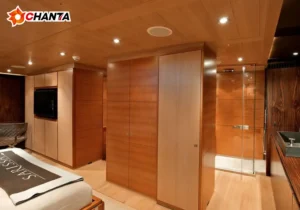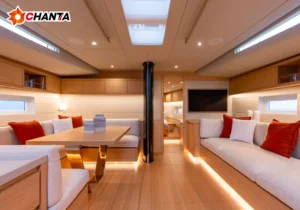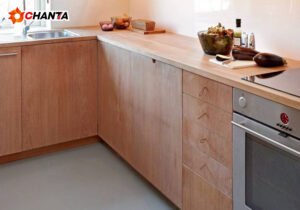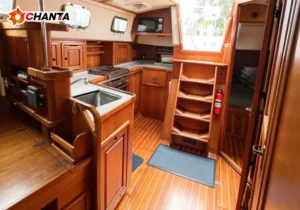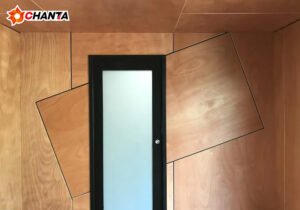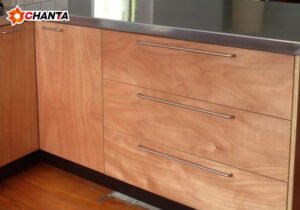When it comes to veneer, durability is one of the key factors that determine its suitability for various applications. Veneer is a thin layer of wood applied to the surface of furniture, cabinetry, and other wood products. While many types of veneer are available, some are more durable than others. In this article, we’ll explore the most durable types of veneer, their characteristics, and the best uses for each.
What is Veneer?
Veneer is a thin slice of wood, usually less than 1/8 inch thick, which is typically adhered to a substrate like plywood, MDF, or particleboard. It is a cost-effective way to achieve the appearance of solid wood without using large quantities of expensive timber. While veneer is generally durable, its strength and resilience can vary depending on the type of wood used and the application process.
Factors that Affect Veneer Durability
The durability of veneer depends on several factors, including:
- Wood species: Some wood species are naturally more durable than others, offering better resistance to wear and tear, moisture, and environmental factors.
- Thickness of the veneer: Thicker veneers are generally more durable because they offer more protection to the underlying substrate.
- Finish and treatment: A well-applied finish can increase the veneer’s resistance to moisture, heat, and scratches, extending its life and preserving its appearance.
- Application: Proper adhesion to the substrate and the quality of the adhesive can also influence the overall durability of the veneer.
Most Durable Types of Veneer
1. Oak Veneer
Oak veneer is one of the most durable and widely used types of veneer in the market. Oak is a dense, hard wood, making it highly resistant to scratches, dents, and general wear. It has a natural, tight grain pattern and is well-suited for high-traffic areas and heavy-use furniture.
Oak veneer is often used in flooring, cabinetry, and furniture, thanks to its longevity and timeless aesthetic. It also takes well to stains, which enhances its natural beauty and adds to its protective layer. The veneer can be further treated with finishes like lacquer or polyurethane to increase its resistance to moisture and stains.
2. Maple Veneer
Maple veneer is another popular choice known for its strength and durability. Maple is a hardwood that resists damage from impacts, making it ideal for high-use furniture, cabinetry, and even sports equipment like gym floors and skateboards.
Maple veneer has a light color with subtle grain patterns, making it suitable for modern and traditional designs alike. When treated properly, maple veneer holds up well against moisture and temperature fluctuations, making it suitable for a wide range of indoor applications.
3. Mahogany Veneer
Mahogany veneer is a luxurious, dense wood known for its rich, reddish-brown color and exceptional durability. Mahogany is naturally resistant to moisture, rot, and termites, which makes it an excellent choice for both furniture and marine applications. While it’s a more expensive option, its beauty and resilience make it worth the investment for high-end furniture and cabinetry.
Mahogany veneer has a fine, straight grain that takes well to finishing, making it ideal for polishing and achieving a smooth, glossy appearance. It’s also highly resistant to warping and expansion, even in humid environments.
4. Walnut Veneer
Walnut veneer is another premium option known for its durability and beautiful dark tones. Walnut is a hardwood that is highly resistant to scratches and dents, making it a good choice for both functional and decorative furniture.
Walnut veneer is particularly popular for fine cabinetry, luxury furniture, and paneling. Its rich, dark color and striking grain patterns make it a favorite for elegant, high-end designs. With proper treatment, walnut veneer can resist moisture and temperature changes, making it suitable for various applications.
5. Birch Veneer
Birch veneer is known for its toughness and smooth texture. Birch is a relatively dense wood, making it resistant to scratches and dents. It’s also less likely to warp or shrink compared to some softer woods, which contributes to its overall durability.
The pale color of birch veneer and its fine grain pattern make it a versatile choice for modern, Scandinavian-inspired designs. It can also be stained or painted to achieve different looks. Birch veneer is often used in furniture making, cabinetry, and wall paneling.
6. Teak Veneer
Teak is a tropical hardwood that is highly prized for its resistance to moisture, rot, and insects. Teak veneer is incredibly durable and can withstand extreme conditions, making it the ideal choice for marine environments, outdoor furniture, and high-humidity areas.
Teak veneer has a rich, golden-brown color and a straight, fine grain, which adds to its aesthetic appeal. It’s often used in boat building and luxury outdoor furniture, where durability and appearance are equally important.
How to Increase the Durability of Veneer
While choosing a durable type of veneer is essential, proper treatment and maintenance are key to ensuring that it remains in top condition for years. Here are a few tips to enhance the durability of veneer:
- Apply a protective finish: A quality finish, such as lacquer, polyurethane, or varnish, can create a barrier that protects the veneer from moisture, stains, and physical damage.
- Avoid exposure to direct sunlight: Prolonged exposure to UV rays can cause the veneer to fade or discolor. Use curtains or UV-protective coatings to minimize this effect.
- Regular cleaning and maintenance: Dusting the veneer regularly and cleaning it with a gentle wood cleaner can help preserve its appearance and prevent buildup of dirt or grime.
- Avoid excessive moisture: Even the most durable veneers can be damaged by excessive moisture. Ensure that furniture and cabinets made from veneer are kept in environments with controlled humidity levels.



